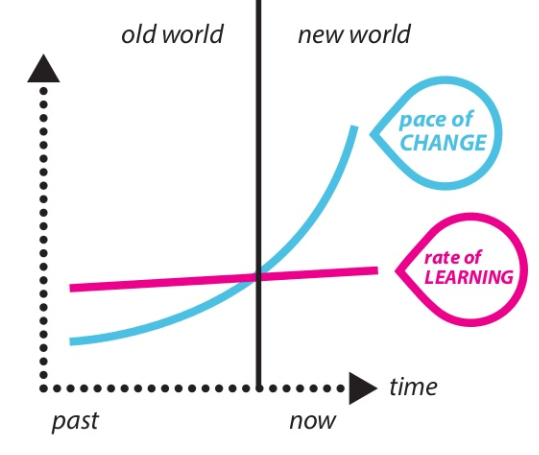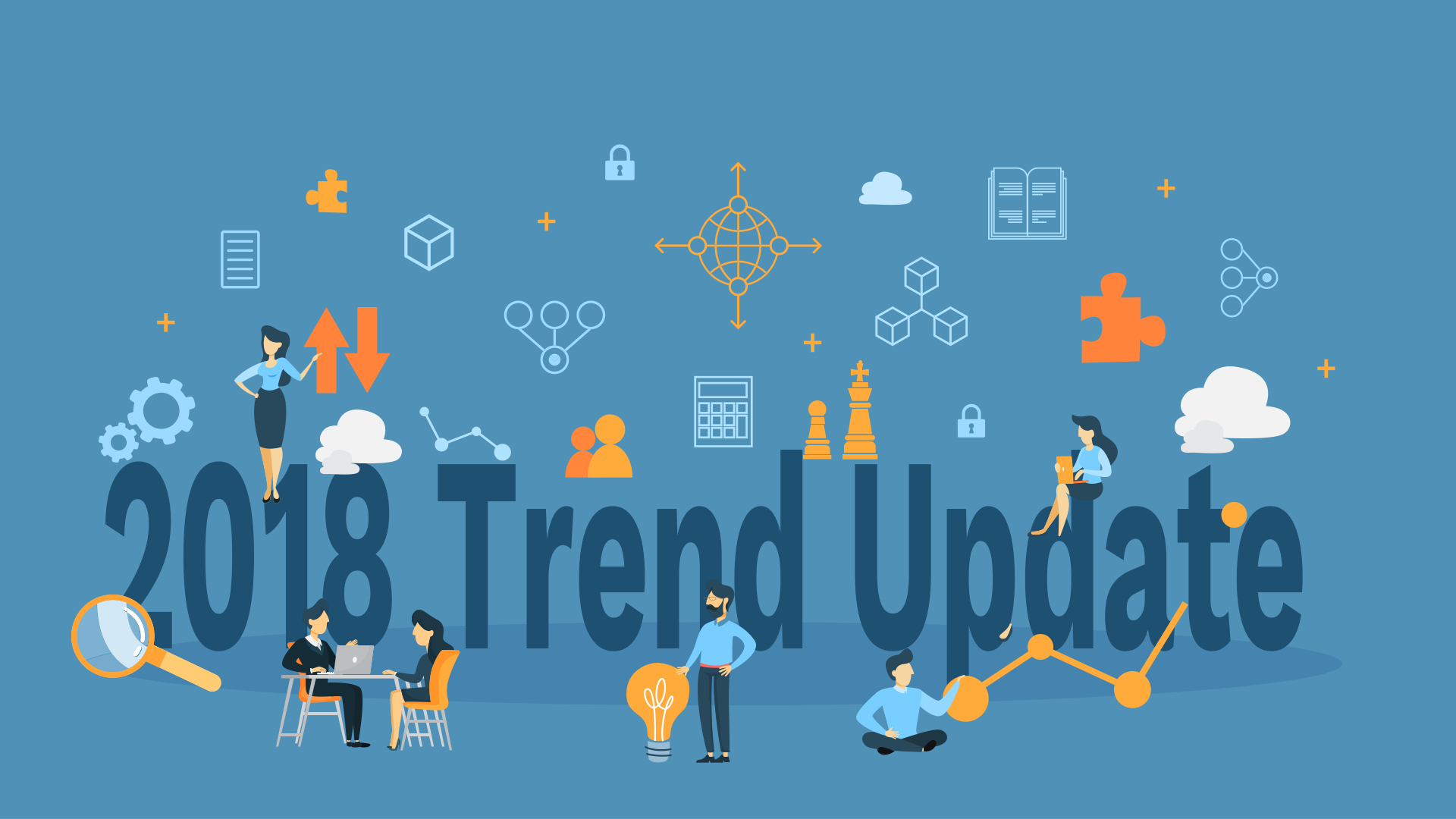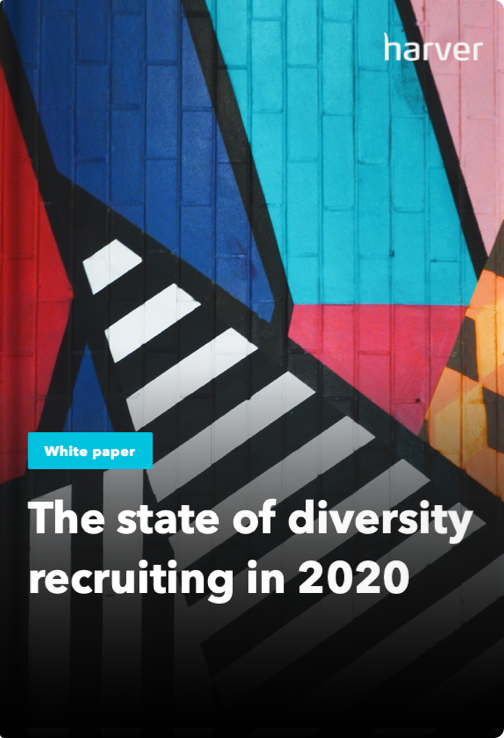Big recruiting trends in 2018 are AI, Chatbots, Data and Candidate Experience. But besides the famous ones, there are a lot more developments going on in the recruiting industry.
In fact, technological developments in general are going at such as fast pace that we human beings can’t learn quickly enough to keep up with them. There simply is too much happening at the same time for us to be able to digest all of it accordingly.

The pace of change is increasing, while
rate of learning stays the same.
So, even if we’d have all the time – and motivation – in the world to spend on absorbing everything that’s happening in the wonderful world of recruitment, we wouldn’t physically be capable to do so.
What a bummer, I know.
But what if we’d have a couple of subject-matter experts that could highlight those developments in the recruitment industry that they are currently most excited about? In other words: they would do the heavy lifting for us and, in a way, present us with a preselection of technologies to keep an eye on.
Sounds good, right?
We thought so too.
We’re half-way through the year, which is why we decided to do an expert round-up about current developments in the recruitment industry. The exact question we asked was:
“What developments in the recruiting industry are you currently most excited about?”
Here come the answers (in no particular order).
Like what you see?
Don’t miss out. Subscribe to our monthly digest to get the latest TA and TM resources delivered right to your inbox.
Tom Haak, Director HR Trend Institute and curator of the HR Tech Community:

There are many developments in recruitment and selection I like very much. Most importantly: sourcing and selection is finally becoming more unbiased.
The combination of clever workforce analytics and artificial intelligence, allows organizations to search for candidates that have the right, future-proof capabilities and personality.
As a result, organizations are able to find more surprising, ‘out of the box’ candidates, rather than just the usual suspects. They can find them faster as well. Organizations and their HR teams have never really embraced thorough (pre-employment) testing before. This is now changing.
Personality and capability tests have become more attractive and are often gamified. Thorough selection can, therefore, be done a lot faster and in a more attractive way and result in valuable feedback, also for those candidates who are not selected in the end.
I also like the increased use of chatbots in the communication with candidates as this can contribute to a more frictionless and better applicant experience.
Jochen Bessemans, HR Tech Valley Matchmaker and Speaker:

I see a number of interesting things happening in HR Tech and recruitment that clearly play into shifting power continuum from employers being the ‘ruler’ of the game and candidates being the ‘subordinates’ towards a reality in which employers increasingly need to adapt to Career Owners.
Let me give you an example related to blockchain. There is a lot happening below the radar which I believe will lead to the following possibilities:
> Imagine we all had our Blockchain work ID: a file linked to all relevant databases with up-to-date contact details, past working experience, courses we have taken (validated!), projects we have done, etc. Basically a high quality, zero effort, deep insights CV! We could give a recruiter temporary access to this ID when we apply and since it contains validated info separate vetting wouldn’t be necessary anymore.
> We could match this ID in one click with a job posting and see if there is sufficient fit (something LinkedIn is currently deploying worldwide, but with Blockchain ID’s you wouldn’t need a LinkedIn account…).
> Better yet: we could have a marketplace where these ID’s can be searched without identifying the Career Owner, hence avoiding bias. If a Career Owner has indicated he or she is open for a new opportunity they can be asked if they want to be approached by the recruiter or open up their ID to apply for the job. Currently, this can only be done via an intermediate – which slows down the process and involves extra costs for recruiters. A Blockchain platform could make it a ‘one-click effort’!
Stacy Chapman, CEO and Co-Founder at SwoopTalent:

Definitely artificial intelligence. I’m not just talking about bots (although they will be important), it’s much broader than that.
We’ve come to a point where we have the data and the processing power to run cognitive technologies like Watson, use unsupervised machine learning and we’ve even got deep neural networks to help us make decisions – and we’re already seeing seriously good results coming from all of this.
As a consequence, recruiting teams can spend less time doing (tedious) time-consuming tasks such as reading resumes, searching for talent, answering queries and filtering requirements because technology can cover most of that.
And that ultimately means that machines or systems that can reason, learn and improve over time will eliminate repetitive tasks so that recruiting can spend much more of their time thinking about, analyzing and forecasting how to best meet business needs – and so, more effectively meet those needs.
Karen Azulai, Editor-in-Chief and Co-Founder at HRTech Nation:

We must remember that what we see now, is only the beginning…People need to be reminded of that because infrastructure technologies are evolving at an amazing pace.
A few of the trends that I see are taking place:
1. An added layer of information to the recruiting process (within the advanced recruiting tools) – Business, industry and competitive intelligence information. This information is integrated into the searches, hence becoming more “3 dimensional”.
It’s no longer just about the potential candidate and his/her professional and soft skills, but also about how they will fit both the job and the organization going forward.
2. The formation of one-stop-shop recruiting and HR platforms. I first spoke about this over a year ago. As recruiters/sourcers we don’t want to have to use several applications. We want to be able to source, engage, interview, etc., using a single tool. I see this materializing now and I’m happy about it.
3. I am excited about virtual reality (VR). I think we are not yet giving VR the respect it deserves in the recruiting and HR industry but its time will come… Startups in this space will benefit from being there from the inception.
4. I am also super excited about chatbots. We must have the patience to see it evolving to what it can and will be.
My message to everyone in the recruiting and HR industry is one: PREPARE!
Sarah Brennan, Founder Accelir, Speaker and Trainer

I am thrilled to see technology and conversations coming to light for the people that work hourly roles, in for example the manufacturing and healthcare industry – the jobs that exist in the midwest and south of the US. The shift away from just technology to help recruit high-tech and white-collar workers is more in line with how our country actually works and where I believe it will have the greatest impact on business and economy overall.
Tim Sackett, President at HRU Technical Resources:

For decades, we’ve completely bombed out when it comes to measuring the success of talent acquisition in our organizations. The one metric everyone will point to as ‘success’ is lowering Days to Fill. Which quite possibly is the single worst metric in the history of the world to determine TA success! Lowering your time to fill actually tells you nothing about how well your TA shop is performing.
I’m most excited about the trajectory of recruiting metrics in the industry as it relates to truly measuring the success of a TA function. We are starting to see organizations really use metrics like Quality of Hire, Quality of Applicant, Quality of Source of Hire, funnel-type activity metrics,
Candidate Experience measures, etc.
When TA begins to measure what’s important, and can then tie that back to the measures of the business that drive success, we are truly getting to a point where TA can help drive business success.
This only happens when technology enables us to gather and report these measures easily. We are seeing more and more business intelligence tools being integrated into our TA Tech Stack and that will really help us move the needle as a profession.
Erik van Vulpen, HR Analytics Expert and People Analytics Community Builder:

Within HR, the recruiting industry has always had a special place. It’s one of the more competitive spaces – and for that reason also one of the most innovative.
What excites me the most is the integration of data in both the entire recruitment process – and the stages that come after recruitment. The increasing use of data holds true for both external and internal data.
An example of the use of external data is that we can now create employee personas based on people’s profile – and match them to companies instead of the other way around.
Another application is how we can now use labor market statistics to estimate recruiting metrics like time to fill and time to hire before a position opens up. This creates a number of opportunities.
Internal data also plays a role. An example of something that has been evolving in the past couple of years is how conscious the recruitment industry is about how they employ aforementioned metrics. HR departments are increasingly becoming data-driven and these measures help in doing HR analytics.
An example of this is the creation of an employee’s persona. By combining your recruitment data with performance data a year later, you can analyze which employee characteristics are likely to lead to superior performance. These enable smart selections that can potentially change how the industry works.
Wrapping up
Alright, let’s finish with some of the main takeaways from our subject-matter experts. There are a few themes that seem to run like a common thread through the various answers:
> Applications of AI are becoming more widespread (clever workforce analytics, advanced recruiting tools, and chatbots being a few of the examples mentioned).
> The increased use of data throughout the recruitment process to measure its success – and even estimate recruitment metrics – is another trend that is mentioned a couple of times.
> Technologies such as blockchain and VR seem to be on the verge of finding their place in the world of recruitment and to start shaking things up in various ways.


